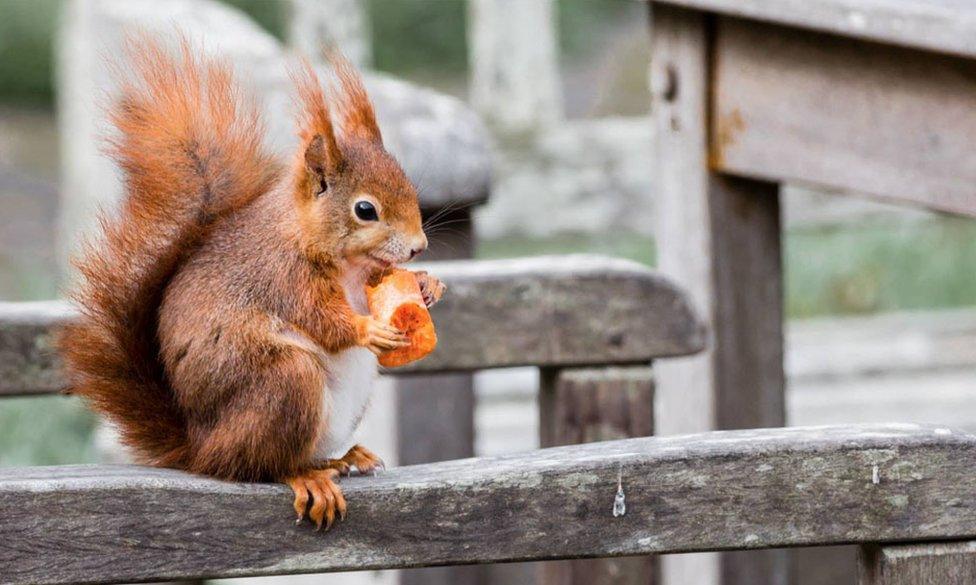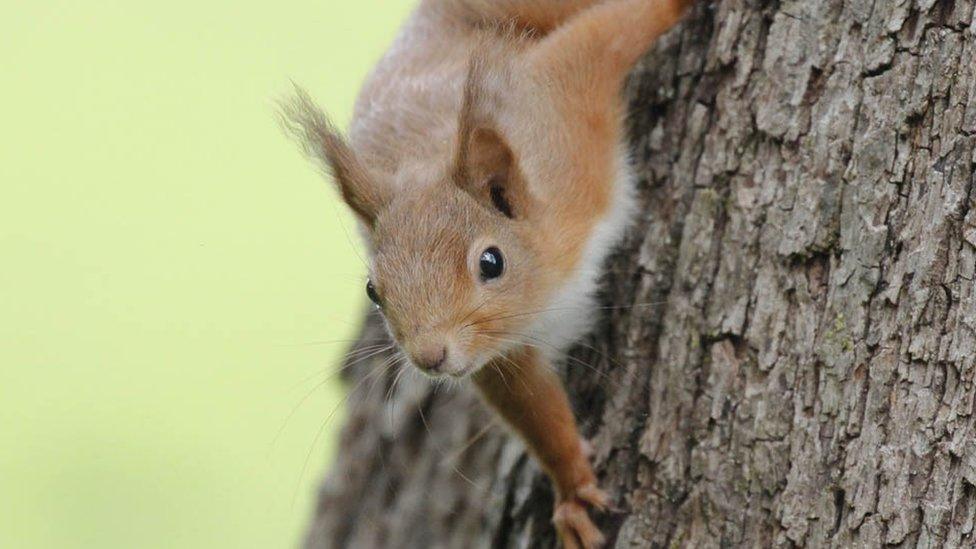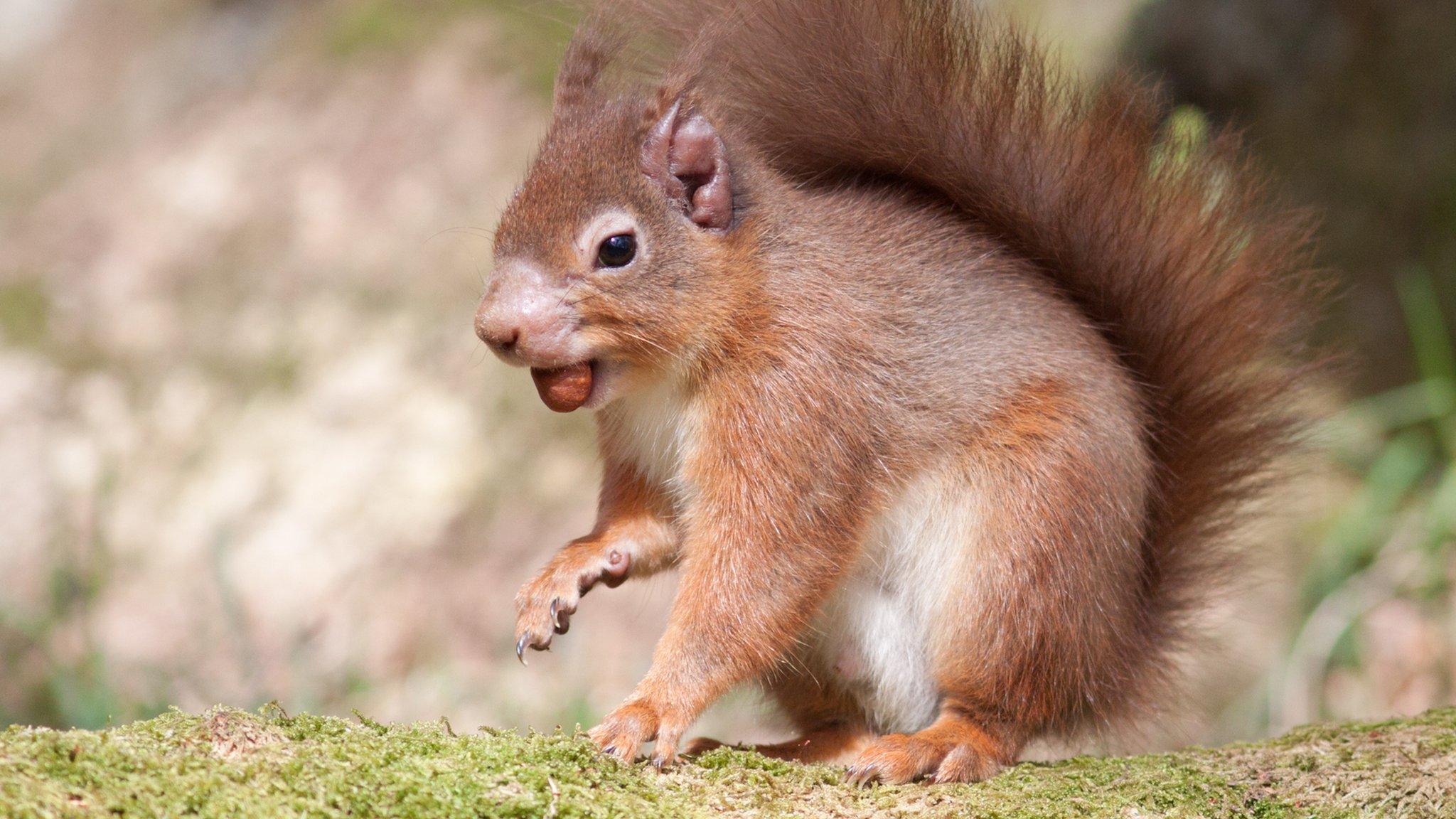Conservationists call for 'red squirrel army'
- Published
- comments

A group of conservation charities is launching its biggest ever recruitment drive for volunteers to help protect the native red squirrel.
A total of 5,000 squirrel-watchers are required across England, Wales and Northern Ireland.
Volunteers will help protect resident squirrel populations.
Researchers say the species remains under threat because of disease and competition for food from larger grey squirrels, from north America.
This army of volunteers led by the Wildlife Trusts will focus on nine "red squirrel strongholds".
At each of these woodland sites, volunteers will be asked to monitor the animals, and to set up motion sensitive cameras for continuous, detailed surveys.

Squirrel-watchers will also be asked to look out for the larger, much more common grey squirrels, so that where they are encroaching on the reds' habitat, they can be culled.
A pox virus, carried by the greys and usually deadly to native reds, is largely blamed for the nationwide crash in the red squirrel population since the 1950s.
In the Pine forests of Scotland, the native species is faring better, with a population that appears to be increasing.
But having dedicated volunteers in these nine pockets of habitat, according to Wildlife Trusts ecologist Dr Cathleen Thomas, will be key to ensuring that this "icon" of the countryside doesn't disappear from the rest of Britain in the next few decades.
'Damaging' greys
"We've seen a great deal of success, and numbers of reds increasing, where we have had dedicated groups of volunteers, so we want to co-ordinate that on a national scale," she told BBC News.
Controlling numbers of the greys, she added, was central to that success.
"It's not that we value the life of one species over another," Dr Thomas said. "But the ecosystem here evolved with the reds."
She added that the greys were "quite damaging" - their habit of gnawing bark can damage and kill trees, and the food they take can impact other wildlife, including birds and dormice.
- Published11 November 2016
